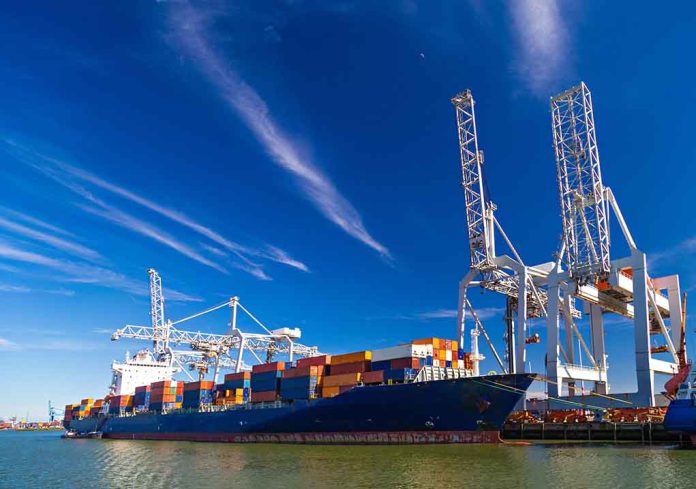
A landmark 62% wage hike has been secured by US dockworkers after a strike, underscoring the potential national economic ripples if union negotiations falter.
At a Glance
- U.S. ports from Maine to Texas shut down due to the first dockworkers’ strike since 1977.
- The strike involved approximately 45,000 dockworkers represented by the International Longshoremen’s Association (ILA).
- The strike began on Tuesday and was suspended on Thursday with a tentative deal reached.
- President Biden chose not to use the Taft-Hartley Act to intervene in the strike.
Strike Overview and Resolution
For the first time since 1977, a major U.S. port disruption occurred across the East and Gulf coasts, spanning from Maine to Texas. Approximately 45,000 dockworkers under the International Longshoremen’s Association (ILA) came together in a historic move that resulted in a partial economic standstill as a direct consequence. This two-day strike remarkably drew attention to union efforts, shutting down major ports like Baltimore, Philadelphia, and others.
Negotiations were tense, but fortunately ended with a 62% wage hike agreement over six years. This occurrence effectively ensures that the current contract extends through January 2025. Despite demands initially set for a 77% wage rise and automation bans, the ILA and the U.S. Maritime Alliance reached a conciliatory agreement without federal intervention. President Biden decided against employing the Taft-Hartley Act, maintaining long-standing union negotiation protocols.
A historic United States port strike has been suspended and a tentative agreement was reached "on wages," according to the International Longshoremen’s Association and the U.S. Maritime Alliance. https://t.co/ZvWAUCffHD
— ABC News (@ABC) October 4, 2024
Economic and Political Implications
This temporary resolution comes during a crucial election period when economic stability remains a high priority. The strike’s suspension is viewed as a way to prevent significant shortages and price hikes, particularly near the holiday seasons, which could have had broader implications on the U.S. economy and potentially a $2.1 billion to $7.5 billion weekly impact. Retailers had already been preemptively adapting by securing orders early and increasing inventories to mitigate potential disruptions.
“I want to thank the union workers, the carriers, and the port operators for acting patriotically to reopen our ports and ensure the availability of critical supplies for Hurricane Helene recovery and rebuilding,” President Joe Biden said in a statement
While the wage issue ended in settlement, the topic of automation remains on the negotiation table. The dockworkers have expressed ongoing concerns regarding the implementation of automated machinery and its potential to replace human jobs. Up until January 2025, further negotiations are expected to address these automated processes that remain a contentious issue in the wider scope of dockworker operations.
Future Considerations
The strike and subsequent resolution exemplify the power of union negotiation tactics within essential industry sectors and their wider economic implications. Analysts suggest that if the strike expanded in duration, it could have led to inflation of certain goods and potential layoffs in manufacturing due to raw material shortages. This situation emphasized the dire necessity for expedited resolution processes to avoid lengthy deadlock scenarios.
While economic stability was momentarily preserved, the issue remains whether this settlement will suffice in preventing future disruptions. As stakeholders continue negotiations, the fabric of dockworker operations, union power, and national economics are intricately interwoven in this evolving narrative.













